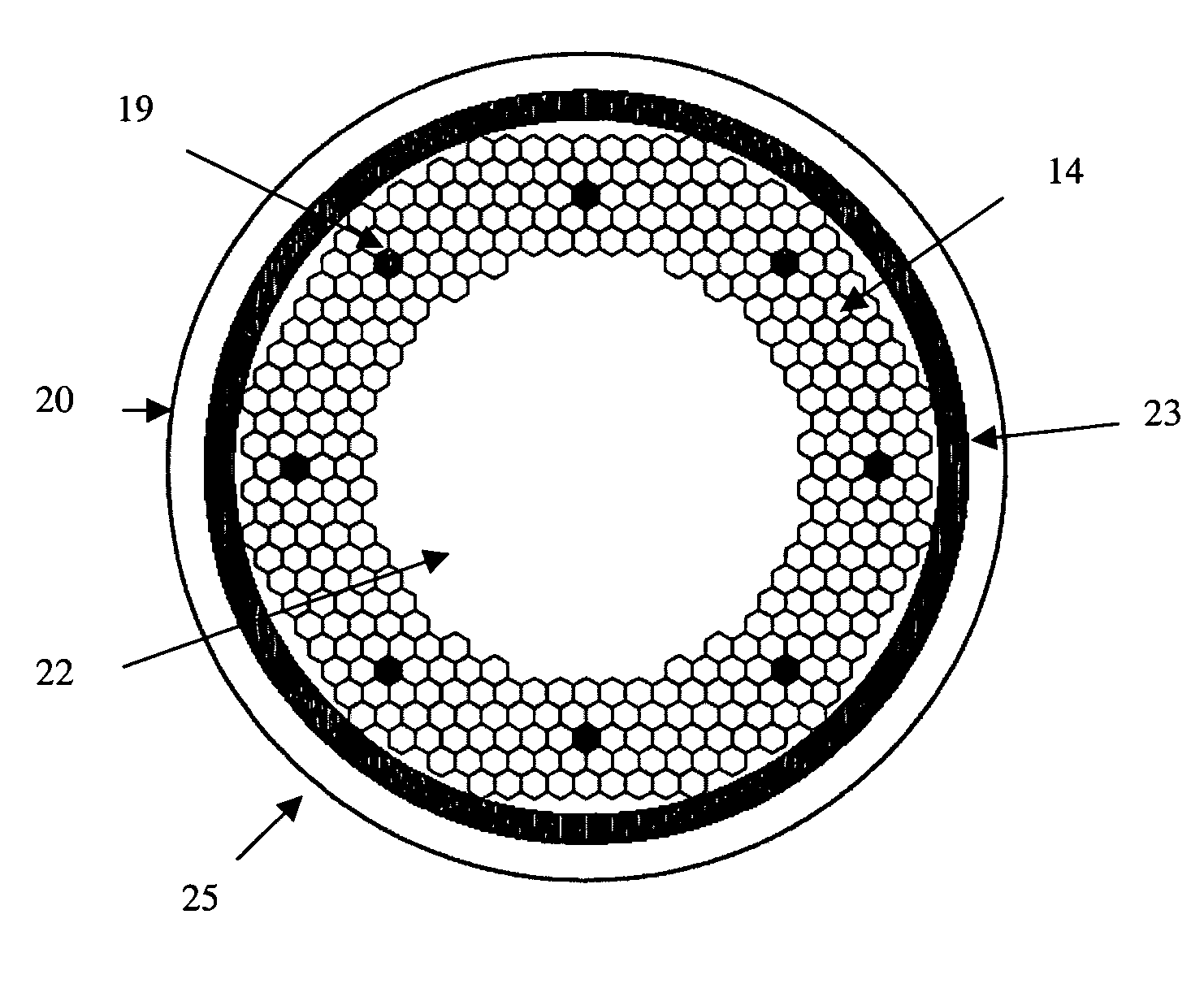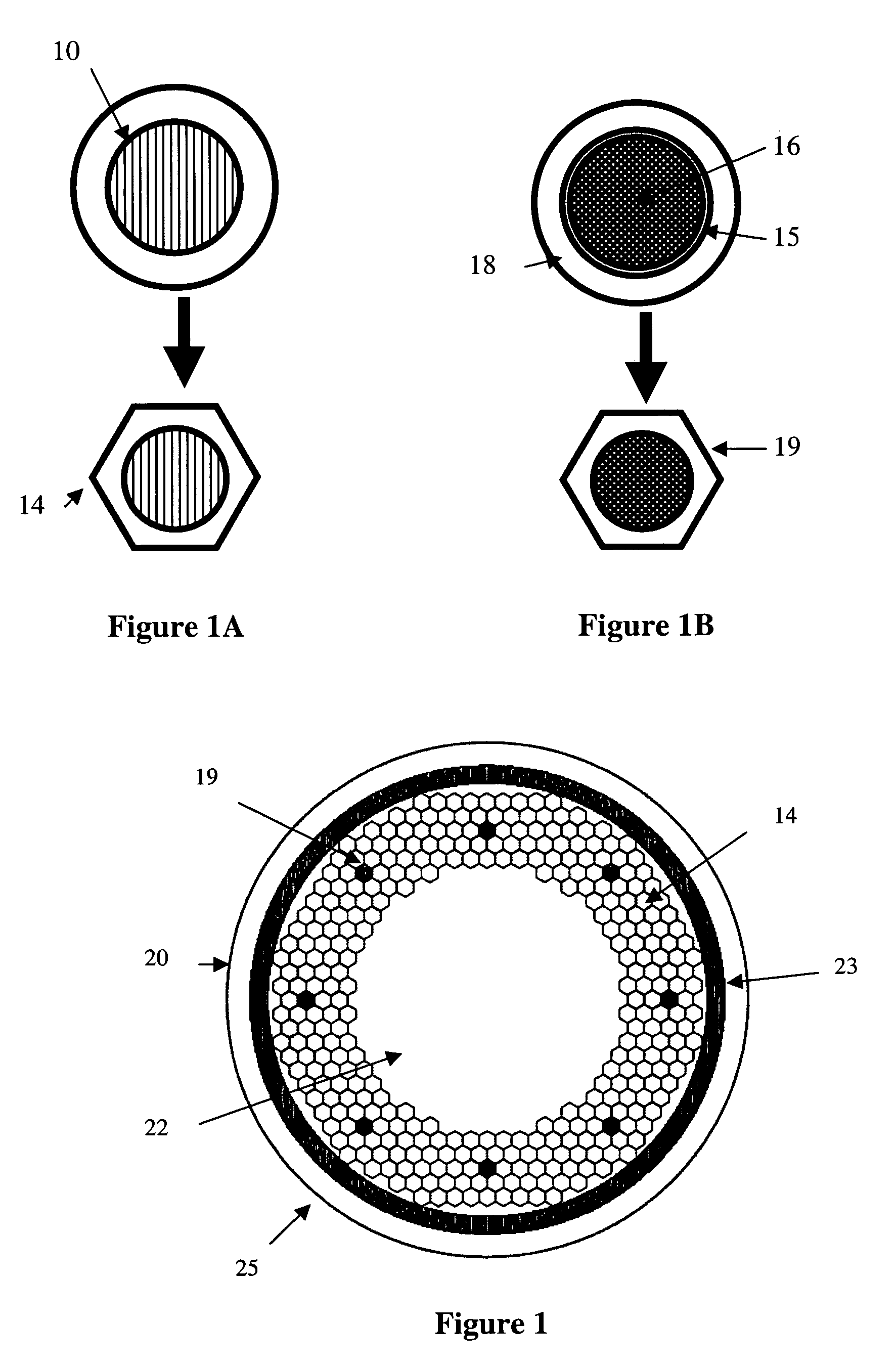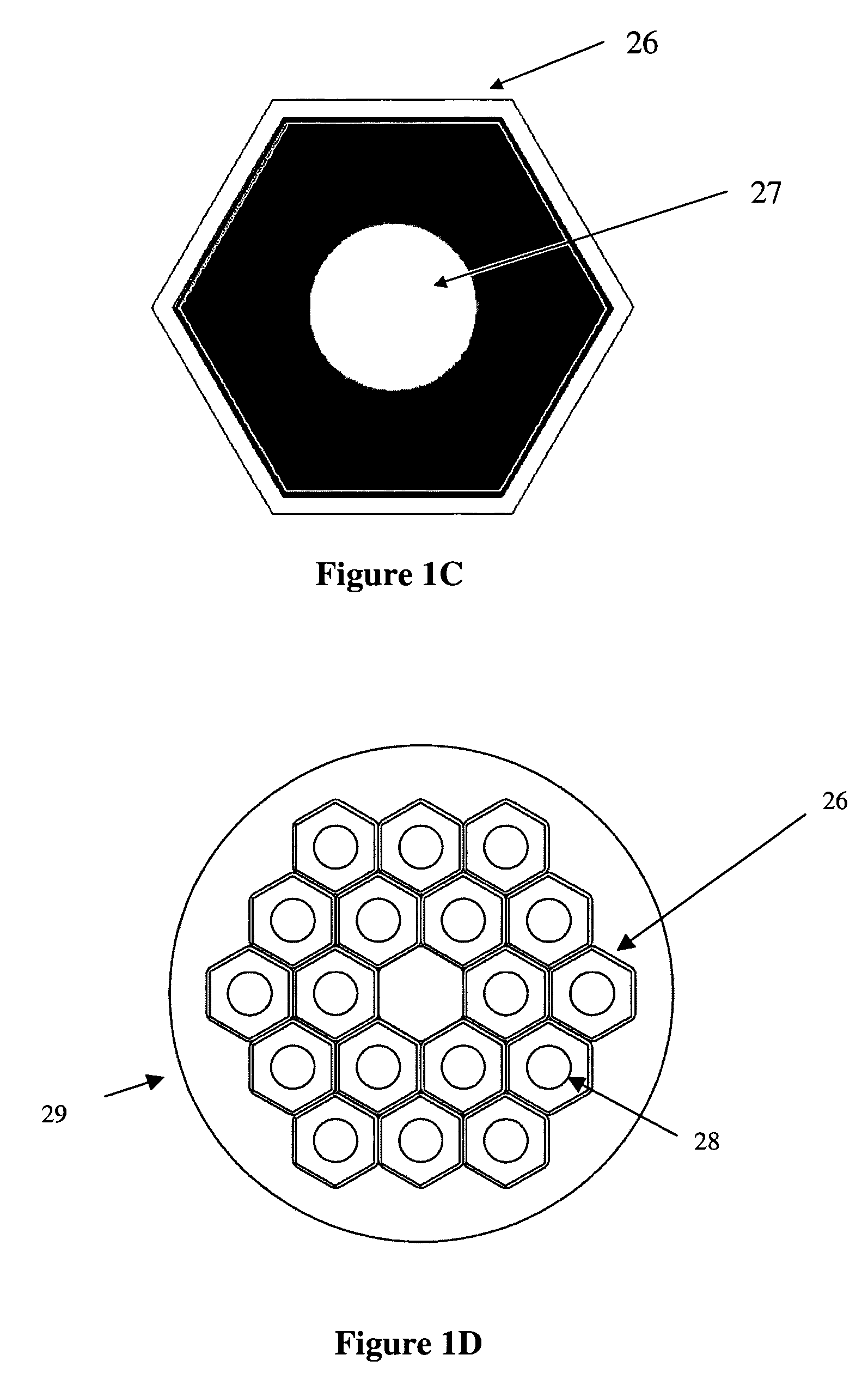Method for producing (Nb, Ti)3Sn wire by use of Ti source rods
a source rod and wire technology, applied in the direction of superconductors/hyperconductors, superconductors, connections, etc., can solve the problems of difficult fabrication, sub>sn composites, and so on, and achieve the effects of reducing the effective filament diameter and ac losses, good ductility, and high diffusion rate of ti
- Summary
- Abstract
- Description
- Claims
- Application Information
AI Technical Summary
Benefits of technology
Problems solved by technology
Method used
Image
Examples
example 1
[0026]In this Example a wire was prepared using in the process subelements of the type shown in FIG. 1. The hex filament subelement design was thus used with a distributed reactable Nb diffusion barrier. It included three hot (≧900° F.) extrusions.
[0027]First Extrusion—Monofilament copper clad hexes of Nb were manufactured by extruding a Nb ingot in a copper can and drawing the resulting rod to hex rods for restacking (FIG. 1a). Typical dimensions of a hex rod are ⅛ inch flat-to-flat×2 feet in length. Monofilament hexes of Nb47 wt % Ti were manufactured by extruding a Nb47 wt % Ti (with a Nb diffusion barrier) in a copper can and drawing the resulting rod to hex rods for restacking with the Nb rods (as in FIG. 1a).
[0028]Second Extrusion—Referring to the cross-sectional view in FIG. 1b, the rods from the first extrusion were restacked in a Nb alloy barrier tube. The Ti dopant source rods were arranged in a symmetrical uniformly spaced pattern among the stack of copper clad Nb or Nb a...
example 2
[0031]In this Example a wire was prepared using in the process subelements of the type shown in FIG. 2. The round filament subelement design was thus used with a single, non-reacting Ta diffusion barrier. It featured one (≧900° F.) extrusion.
First Extrusion
[0032]Nb rods and Nb47 wt % Ti rods (dia. 0.54 inches) are packed in a gundrilled copper billet (dia. 12.25 inches, FIG. 2a) and this subelement was extruded to 3.1 inches. Monofilament rods of Nb47 wt % Ti were manufactured in a similar manner to that described in Example 1.
[0033]This subelement was gundrilled and packed with tin, wiredrawn and shaped at restacking size.
Restack
[0034]The subelement shapes were packed in a Ta barrier in a Cu tube and drawn to final size (0.81 mm diameter). The wire was reacted (FIG. 6) using a typical internal tin heat treatment (210° C. for 48 hrs., 400° C. for 48 hrs., and 675° C. for 100 hrs). During the reaction stage both the filaments fully reacted and the titanium in the Nb47 wt % Ti rods di...
PUM
| Property | Measurement | Unit |
|---|---|---|
| diameter | aaaaa | aaaaa |
| size | aaaaa | aaaaa |
| size | aaaaa | aaaaa |
Abstract
Description
Claims
Application Information
 Login to View More
Login to View More - R&D
- Intellectual Property
- Life Sciences
- Materials
- Tech Scout
- Unparalleled Data Quality
- Higher Quality Content
- 60% Fewer Hallucinations
Browse by: Latest US Patents, China's latest patents, Technical Efficacy Thesaurus, Application Domain, Technology Topic, Popular Technical Reports.
© 2025 PatSnap. All rights reserved.Legal|Privacy policy|Modern Slavery Act Transparency Statement|Sitemap|About US| Contact US: help@patsnap.com



